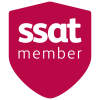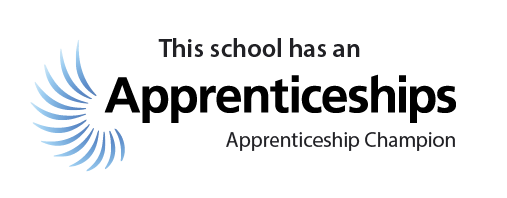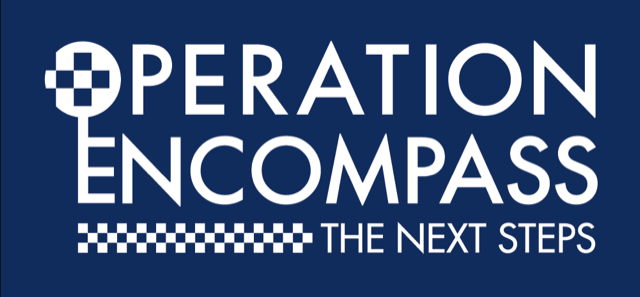LSA Technology and Performing Arts College is committed to safeguarding and promoting the welfare of young people and expects all staff and volunteers to share this commitment.
- Purpose
- Administration of medicine
- Asthma
- Diabetes Mellitus (type 1)
- Anaphylactic shock
- Epilepsy
- Dealing with accidents
- Students with care plans
- Training
- First aid
- Intimate care
- Identification of students with long term medical conditions
- Appendix
1.1 The Governors and staff of Lytham St Annes Technology & Performing Arts College wish to ensure that students with medical needs receive proper care and support at school. The Headteacher will accept responsibility in principle for members of the school staff giving or supervising students taking prescribed or Emergency medications during the school day where those members of staff have volunteered to do so.
2 Administration of Medication
2.1 Medication will only be received in school if it has been prescribed by a doctor or on the written request of a parent.
2.2 Only reasonable quantities of medication should be supplied to the school, (for example, a maximum of four weeks supply at any one time)
2.3 Each item of medication must be delivered in its original container and handed directly to the receptionist
2.4 Where the student travels on school transport with an escort, parents/carers should ensure the escort is informed of any medication sent with the student, including medication for administration during respite care
2.5 Each item of medication must be clearly labelled with the following information
- Student’s name
- Name of medication
- Dosage
- Frequency of dosage
- Date of dispensing
- Storage requirements (if important)
- Expiry date
2.6 The school will not accept items of medication which are in unlabelled containers
2.7 Unless otherwise indicated all medication to be administered in school will be kept in a locked medical cabinet
2.8 On request the school will provide parents/carers with details of when medication has been administered to their child
2.9 Where it is appropriate to do so students will be encouraged to administer their own medication, if necessary, under staff supervision. Parents/carers will be asked to confirm in writing if they wish their child to carry their medication with them in school
2.10 It is the responsibility of parents/carers to notify the school if there is a change in medication, a change in dosage requirements, or the discontinuation of the student’s need for medication. Parents are responsible for ensuring emergency medication stored in school is in date. The Health and Safety Co-ordinator will regularly monitor that stored medication is in date, taking action as appropriate.
2.11 Staff who volunteer to assist in the administration of medication will receive appropriate training/guidance through arrangements made with the School Health Service.
2.12 The school will make every effort to continue the administration of medication to a student whilst on trips away from the school premises, even if additional arrangements might be required. However, there may be occasions when it may not be possible to include a student on a school trip if appropriate supervision cannot be guaranteed.
2.13 Where there is a need for a student to have pain relief in school, one of the senior First Aiders, with the consent of parents or guardians may consider the use of paracetamol. The First Aiders will follow set guidelines for administration of this medication. (see appendix 1)
An example of when paracetamol could be given is when a pupil has a headache, but does not have any pain relief on them in school, a parent is contacted and agrees that they can have paracetamol, but they are unable to attend school to provide the medication.
PROCEDURES - Guidelines to staff
3.1.1 Medication
Asthma sufferers carry their own medication. Medication is NOT held centrally unless a parent makes a specific request, nor is it administered by the school.
3.2.1 Treatment
Preventers: These are taken daily at home am & pm to make the airways less sensitive to the triggers. Generally speaking preventers come in brown (sometimes white) containers.
Relievers: These medicines, sometimes called bronchodilators quickly open up narrowed airways and help the student’s breathing difficulties. Generally speaking relievers come in blue containers.
RELIEVER MEDICATION SHOULD BE CARRIED BY THE STUDENT AT ALL TIMES INCLUDING DURING ACTIVITIES SUCH AS CROSS-COUNTRY RUNS /PE
Children with asthma learn from their past experience of attacks; they usually know just what to do and will probably carry the correct emergency treatment. As asthma varies from child to child it is impossible to give rules that suit everyone, however the following guidelines may be helpful:
3.3.1 During an attack
a) Ensure that the reliever medicine is taken promptly and properly:
b) Make sure an adult stays with the pupil
if in doubt contact a qualified First Aider
c) Stay calm and reassure the student:
- listen to what the student is saying and to what he/she wants: the student probably has been through it before
- loosen tight clothing around the neck
- offer the student a drink of warm water
- try tactfully to take the student’s mind off the attack
- don’t put your arm around the student’s shoulder as this is restrictive
d) Help the student to breathe:
- Encourage the student to breathe deeply and slowly
- Most people with asthma find it easier to sit upright or to learn forwards slightly
- The student may want to rest his/her hands on the knees to support the chest
- Make sure that the student’s stomach is not squashed up into the chest
- Lying flat on the back is not recommended
IF THE RELIEVER HAS NO EFFECT AFTER 5-10 MINUTES CALL AN AMBULANCE.
3.4.1 After an attack
Minor attacks should not interrupt a student’s concentration and involvement in school activities. As soon as the attack is over encourage the student to continue with normal activities.
LCC procedures – Asthma at school (NAC leaflet), Every Breath you Take (NAC video).
4 DIABETES MELLITUS (TYPE 1 DIABETES)
4.1 This is a condition which is ever present in schools. The following can happen:
- Hypoglycaemia – when blood sugar levels fall below normal 4mmol/l
- Hyperglycaemia – prolonged high blood sugar level, which can lead to diabetic coma.
4.2 Hypoglycaemia (low blood sugar most common) – symptoms:
- Faintness
- Palpitations
- Strange behaviour
- Sweating
- Cold skin
- Strong pulse
- Shallow breathing
4.2.1 Treatment – Follow the student’s Care Plan
4.2.2 Mild or Moderate Hypoglycaemia; below 4mmol/l
Awake with symptoms of hypoglycaemia i.e. shaky pale sweating, hungry, dizzy, don’t feel well, aggressive feel faint
- Sit down, check blood glucose level. Stay with child
- Give 3 dextrose tablets or sugary drink i.e. 50 mls of lucozade or 100 mls of coke or sugary drink
- Type 1 Diabetics have emergency boxes stored in the medical room.
- Students also carry emergency supplies with them.
- When student recovers - blood glucose rises above 4mmol/l - give starchy food, e.g. 2 biscuits or sandwich.
- In the unlikely event of a student losing consciousness call an ambulance.
4.2.3. Severe hypoglycaemia
- If pupil is unconscious and not able to swallow do not give anything by mouth.
- Stay with the pupil put in recovery position
- Call 999
4.2.4 Hyperglycaemia (high blood sugar) – symptoms:
- Dry skin, rapid pulse
- Deep breathing, very difficult to inhale
- Smell of acetone on casualty’s breath
- Treatment – rest and reassure patient, call for an ambulance.
(This usually comes on over days and so is not an acute problem) but can be serious.
There is a sudden allergic reaction to:
- Certain foodstuffs
- Drugs
- A sting from an insect
- Latex rubber
In such cases breathing is dramatically reduced because of tightening of the airways due to swelling. They become shocked because of dilated blood vessels.
5.1 Symptoms:
- Anxiety
- Blotchy skin/rash
- Swelling of face/eyes/throat
- Seriously impaired breathing
- Rapid pulse
- Unconsciousness
5.2 Treatment:
- Dial 999
- If shocked, best to lie patient down
- Keep patient warm
If a member of school displays those symptoms contact a First Aider IMMEDIATELY. Medication for all known sufferers of anaphylactic shock is kept in a named box in the medical cupboard in the medical room. Key is kept in main office.
6.1 Minor Partial Seizure – A sufferer may remain conscious with the following
6.1.1 Symptoms:
- Sudden ‘switching off’
- Staring blankly
- Slight twitch/jerking
- Possible shouting/noise making
6.1.2 Treatment:
- Sit the casualty in a quiet place and observe. Remove sources of harm.
- Reassure patient
- Notify parents.
6.2 Complex Partial seizure – Where consciousness is affected
6.2.1 Symptoms:
- Confusion
- Unaware of surroundings
- Mumbling sounds
- Chewing movements
- Not respond when spoken to
6.2.2 Treatment
As above
6.3. Generalised –Tonic Colonic Seizure
In some cases a child or young person loses consciousness
6.3.1 Symptoms:
- May start with casualty crying out
- Casualty falls down & may go unconscious
- Rigid back
- Breathing may become difficult
- Lips may go blue
- Clenched jaw
- Convulsions
- Saliva and/or blood in the mouth
- Loss of bowel control.
6.3.2 Treatment:
- Observe casualty
- Loosen clothing
- Administer Emergency Medication (as per care plan)
- Place in recovery position when convulsions cease
- Call 999 if fitting continues and recovery to consciousness is slow
- Contact Parents
Quiet often after a seizure the child or young person may feel tired, be confused, have a headache and need time to sleep. Recovery times vary some may feel better after a few minutes while others may need to sleep for several hours
7 In all the above conditions the school keeps a medical record and staff should familiarise themselves with this.
8 Medication should be stored in the medical cupboard.#
Students
a) Use common sense and speedy action. Help keep the student calm and send for help from a qualified First Aider using your two-way radio or by sending a student. Remain with the original student. Calmly give clear and precise instructions about your location and the nature of the injury.
b) Later but at the earliest convenient time complete an Accident/Incident report – found on the intranet page and email to the Health and Safety Coordinator.
c) Parents will be notified so that a student can be taken home or for medical treatment. In urgent cases an ambulance will be called.
d) If the accident does not warrant a student leaving your room it is wise to see the student at the end of the lesson to check on his/her welfare and in marginal cases you or your Department Head may wish to contact home to inform parents. Parents must be informed if a student has suffered a bump to the head, Issue bump to the head letter. X:\Health & Safety\bump to the head letter
Staff
e) If you injure yourself seek help or send a student for help. First Aid or medical assistance will be provided.
f) As soon as possible after the accident complete an Accident/Incident report – found on the intranet page and email to the Health and Safety Coordinator.
g) If you have an accident outside working hours this must also be reported to the Head on the same form, irrespective of whether you are prevented from attending school.
h) If the accident is serious and has happened at work or during a work activity off-site, e.g. a broken bone, or involves a stay in hospital you should ALSO notify the Health and Safety coordinator who will produce a RIDDOR report.
Near Misses
i) Accidents can often be prevented if action is taken following a near miss. Report any incident you witness on the normal accident form, labelling it accordingly.
10.1 Should a student be identified by the School Nurse as needing a Health Care Plan the plan will be drawn up by the Health and Safety Co-ordinator in conjunction with the School Nurse, Pastoral Managers, Parents (and student if appropriate). The Health and Safety Co-ordinator will inform the Clerical Team for entry of the basic information onto SIMS (see flow chart). The Health Care Plan itself will be held by the Health and Safety Co-ordinator and will be implemented, monitored and evaluated in liaison with parents (and student if appropriate) and relevant staff.
11.1 All members of staff will receive annual training in dealing with students who suffer from asthma, diabetes, epilepsy or who may suffer anaphylactic shock.
12.1 A number of staff have qualifications in First Aid, as up-to-date list is held by the Health & Safety Co-ordinator. He is responsible for ensuring staff receive regular training to update their qualifications.
13.1 Should any student require intimate care this will be identified in a Care Plan. Staff involved in providing intimate care will be identified in the plan, will receive appropriate training and will follow NHS Essence of Care Guidelines (available from the Nurse).
14 IDENTIFICATION OF STUDENTS WITH LONG TERM MEDICAL CONDITIONS
14.1 Students New To School
- Parents inform school of a long term medical condition via the admission form
- Form passed to clerical team
- Information entered by clerical team onto SIMS
14.2 Existing Students With A New Medical Condition
- Parents inform school of a long term medical condition by any other method (Medical Information Update Form)
- Information passed to:
- Clerical Assistant to Assistant Headteacher’s and Colleges
- Information entered by Admin Manager onto SIMS
- Information forwarded to college office for filing in student records and information sharing purposes.
- Information passed to college office:
- College pass to Clerical Assistant to Assistant Headteacher’s and Colleges (using Medical Information Update Form) for input onto SIMS
- Clerical Assistant to Assistant Headteacher’s and Colleges returns to college office for filing in student records and information sharing purposes
14.3 Information Sharing & Staff Responsibilities
- List cross referenced with School Nurse
- Complete medical list provided for Nurse, Heads of College, Heads of Department, First Aiders, SLT by clerical team
- Medical list to Data Officer for entry to Assessment Manager class lists
- Class teachers to familiarise themselves with SIMS medical data on identified students
- Additions to SIMS list made by clerical team.
Approved by: _______________________________________________________________
Chair – Mr Neil Harvey
On (date): 3rd October 2013
See Appendix 1 Below
Guidance of the Safe and effect use of Paracetamol
Paracetamol is only to be administered by one of the Senior First Aiders; the use of this medication is to aid pain relief or fever, when a parent or guardian cannot attend school to supply the above medication. This should only be given once consent has been obtained by the parent or guardian of the pupil needing the medication.
The following need to be checked before the pupil is given Paracetamol
- They normally take Paracetamol.
- They are not allergic to Paracetamol
- They have not taken any other Paracetamol based products in the last 4 hours.
- They have not exceeded the maximum daily dosage.
- They do not have an accompanying Head Injury.
- They have not taken any other substances or Alcohol.
Form
- Paracetamol 500mg tablets
- Paracetamol 250mg/5mL suspension
Check the expiry date on the packaging
Dosage
For those between 12 and 16 year old:
- One 500mg tablet or
- 10mL of Paracetamol suspension 250mg/5mL.
For those over the age of 16
- One or two 500mg tablets (500mg – 1000mg) or
- 10mL-20mL of Paracetamol suspension 250mg/mL.
Only one dose to be given, taken immediately. Tablet(s) should be swallowed with water.
Usage
In case of:
- Mild to moderate pain
- Pyrexia (fever)
Desired effects
- Relief of pain
- Reduction in temperature.
Notes
- Paracetamol may interact with other drugs, eg. Cholestyramine
- Paracetamol may be taken with ibuprofen.
Undesired effects
- These are rare and usually mild if they occur; they include skin rashes
- Liver or Kidney damage can occur if taken in overdose.
Documentation
- Where possible get the parent or guardian to send an e-mail to the members of staff who has made contact, with further consent of medication being administered.
- Recorded the use of paracetamol in the minor accident/incident log
- Recorded the issuing of the paracetamol on the drug control sheet
- Advise college office of actions taken by First Aider.












